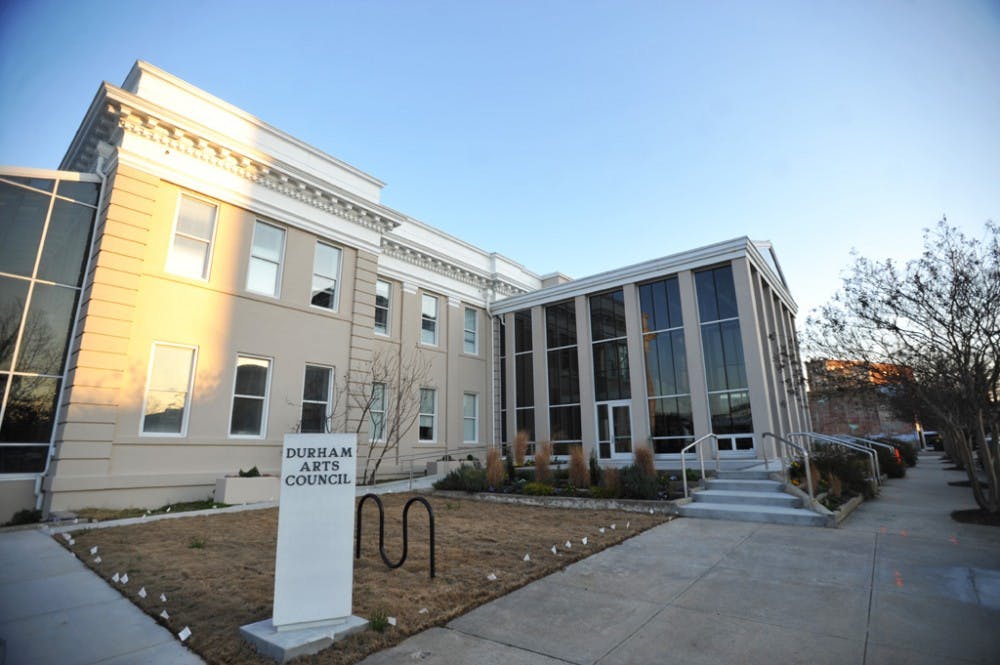Durham Arts Council’s recent announcement of this year’s crop of Ella Fountain Pratt Emerging Artists Grants serves as yet another reminder of the late Mary Duke Biddle Trent Semans’ legacy in supporting the arts in Durham.
Semans, who passed away last Wednesday, will be honored at the Emerging Artists Awards Ceremony Feb. 23. Semans and her husband, Jim, brought the idea of funding individual artists to the Durham Arts Council in the 1980s. They worked with Ella Fountain Pratt, a close friend of Semans’, to create the Emerging Artists Grants in 1984, said Margaret DeMott, director of artist services at the Durham Arts Council.
“They said, ‘OK, let’s start a program that gives small career development grants to individual artists at a point where they’re still developing their career,’” DeMott said. “Now there are many other programs across the country that recognize the importance of artists developing their careers; in North Carolina, every county has a [program similar to the Emerging Artists Grants].”
The Council awards 15 or 16 grants each year and has done so every year since 1984, DeMott said. This year, 15 winners—whose media range from fiber art to theater—were selected from a pool of 97 applicants.
Diane Daniel, one of this year’s grant winners, applied for an Emerging Artists Grant to pay for editorial assistance for her upcoming memoir from author Melissa Delbridge. Daniel, a journalist who freelances for newspapers including the Boston Globe, is writing a memoir from her perspective as a spouse to Lina, a male-to-female transgender.
“[The grant is] for emerging artists, which could be someone who is already established in a medium but is doing something new for them,” Daniel said. “That’s what excited me. I said ‘Hey, that’s me! I’m an emerging artist.’”
Daniel said she has been working on the memoir for about seven years but became serious about it last year. She added that she has found that the writing process for a memoir varies greatly from what she is accustomed to as a journalist.
“This is a huge stretch as a writer, and the craft is way out of my comfort zone,” Daniel said. “My journalism has been no longer than 3000 words, but that’s half a chapter in a book. So for me, the most daunting part has been learning how to structure the book, how to approach it.”
Daniel attracted attention after she wrote a Modern Love column in the New York Times entitled “My Husband is Now My Wife” and an article in the Boston Globe called “Goodbye husband, hello wife” in August 2011. In the articles, she details what she went through as Lina made the transition from male to female.
After publishing the NYT piece—which ends with the line “Diane Daniel lives in Durham, N.C.”—Daniel said she heard from a number of people in the Triangle. Later in February, Daniel said she plans to publish a similar piece about her relationship with Lina in the Raleigh News and Observer.
“There’s an immediacy where people feel affected by something when it’s local, which is why I’m writing about it in the News and Observer,” Daniel said. “My whole mission is advocacy and I know that writing something in the News and Observer will play more of an advocacy role than in the New York Times—it will have a greater impact because it’s someone in their own backyard.”
Another grant winner, abstract artist Anne Gregory, Trinity ’78, will be using her grant toward an upcoming trip to Morocco. She was asked to join a group of North Carolina artists going to Morocco to collaborate with Moroccan artists on art that will be donated to charity.
Gregory majored in English during a time when the University did not officially recognize double majors, although she fulfilled all of the requirements of an art major. During her senior year at Duke, she interned at the Durham Arts Council.
“I’ve always known about the grant and have always been involved in the Arts Council,” Gregory said. “This is not the first time I’ve applied—it’s competitive because it’s well-known.”
Gregory, who has painted full-time for the past three years, said it takes her months to finish a painting. She paints in layers, and often sands or scrapes her canvases before hosing some off with water outside.
“My paintings go through a lot of abuse,” Gregory said with a laugh.
Her work includes three series of paintings—the Pi series, which features lots of earthy tones and powerful images, the Path series, which she described as “calmer,” and the Uprising series.
“Uprising has a lot of turbulence and frenetic energy in how the paintings look, but I’m also trying to capture a calmness as well,” Gregory said.
Gregory, who also teaches painting classes at the Durham Arts Council alongside serving on the board of the Scrap Exchange, said she is honored to have received the grant and sees it as an affirmation that she is moving along in her career.
“In the application, we had to talk about our career goals and how the grant will impact our goals,” Gregory said. “I explained how I want to work with other artists and just make a difference with my art.”
Correction: Melissa Delbridge was incorrectly identified as an archivist in Duke’s Rare Book, Manuscript and Special Collections Library. Currently, Delbridge is an author. The Chronicle regrets the error.
Get The Chronicle straight to your inbox
Signup for our weekly newsletter. Cancel at any time.

